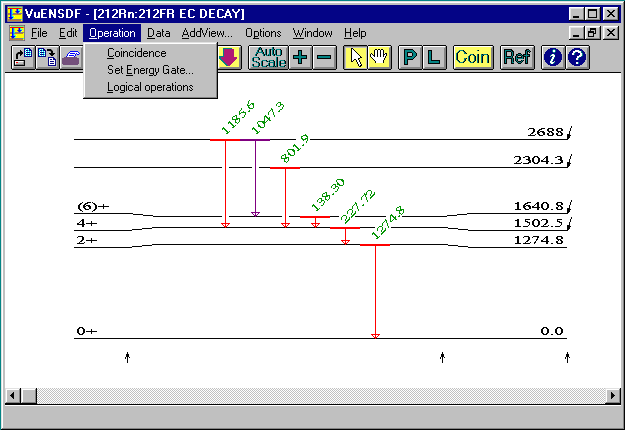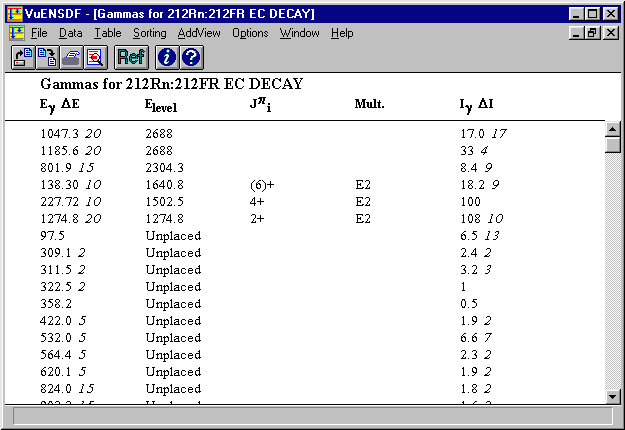By
S.Y.F. Chu*, H. Nordberg*, R.B. Firestone*, L.P. Ekström**, and P. Kanjanarat*
* Isotopes
Project, Ernest Orlando Lawrence Berkeley
National Laboratory
** Department of
Physics, Lund University
Comments: This is an embryo to something I think we need - a description of Isotope Explorer (as opposed to the manual). It (or parts of it) could be used to present Isotope Explorer in progress reports, at conferences etc. This is, as I said, just a beginning. I would be grateful if you suggest improvements and things to add (just write them up in an email, and I'll include it). Again, we should not include usage (which will be written up in the manual) and I think we should only deal with implemented features. The document should not be too long (2-3 pages should be enough).
Isotope Explorer is a 32-bit Windows program for retrieving, displaying, listing, manipulating and searching nuclear structure and decay data. Information from the Evaluated Nuclear Structure Data file (ENSDF) is available for viewing with Isotope Explorer.
Data are traceable to the original publications through Keynumbers contained in ENSDF. These Keynumbers are decoded into complete references using the Nuclear Science References (NSR) file.
Isotope Explorer is very flexible with regard to data sources:
Isotope Explorer allows users to view nuclear data interactively by selecting commands and options from a Menu bar or a Toolbar, or interacting directly with objects such as levels and gammas.
The program uses a multiple document interface (MDI) that makes it possible to open a number of files and display them at the same time in child windows inside the main window. It supports three types of views: graphic drawing display, table display and text editor.
Current information about the program is given on the Isotope Explorer Home Page with
A user's manual for the program is available on

The menu items allow the user to determine how the display looks, select parts of the data and print the decay scheme. The program can also display simple and complicated coincidence relations.

The user has full control over which data are displayed and how they should be sorted. The table can be printed or exported to an ASCII file to be used as input to other programs.